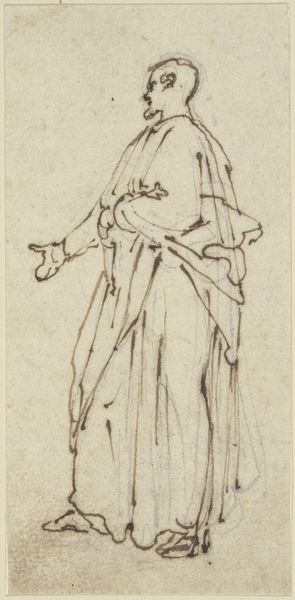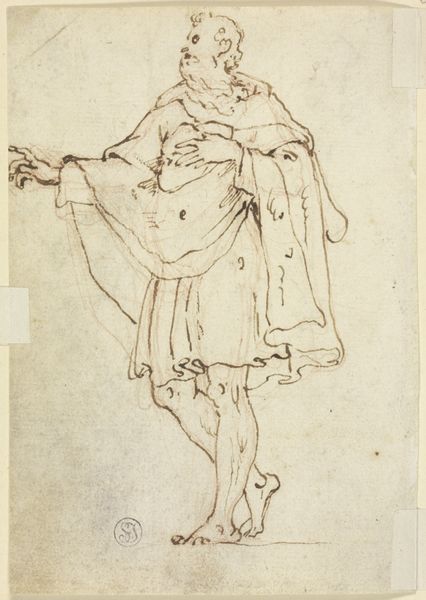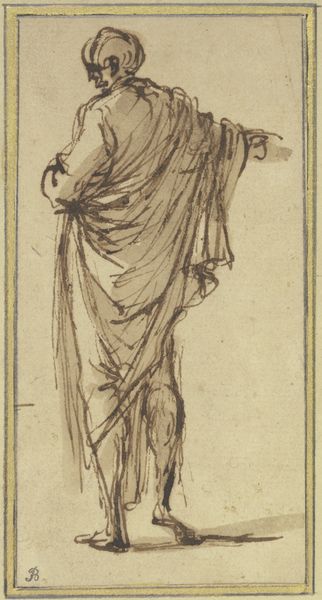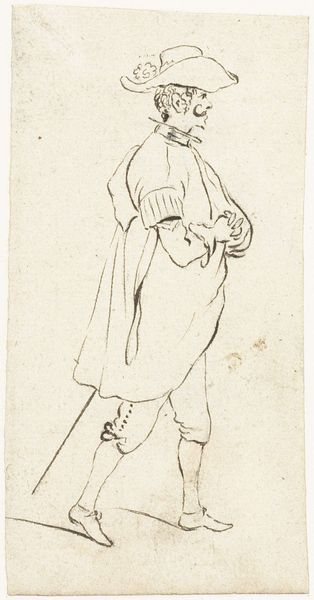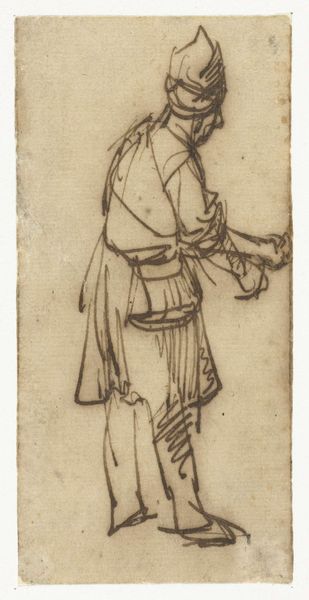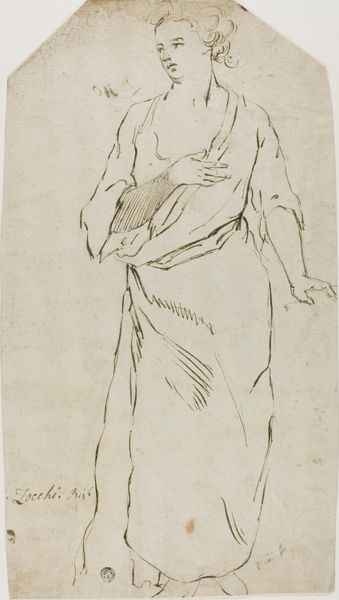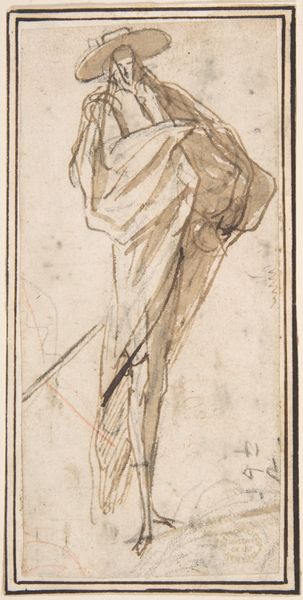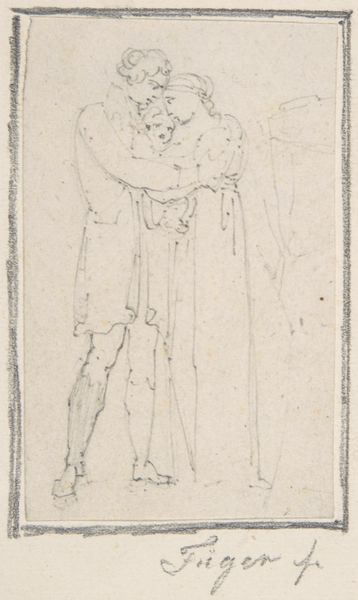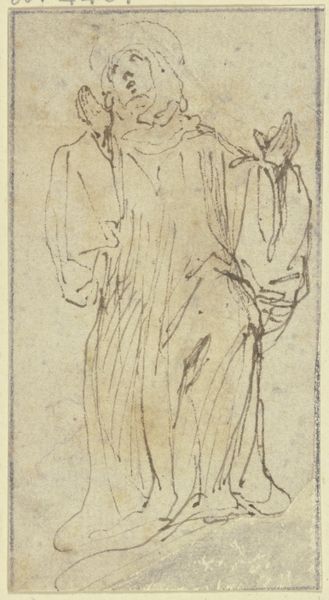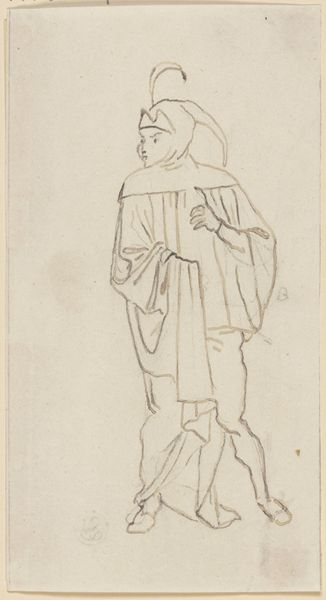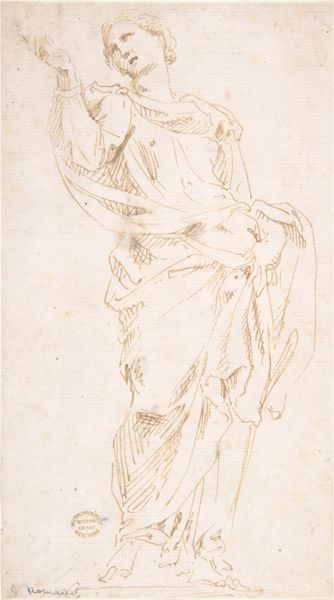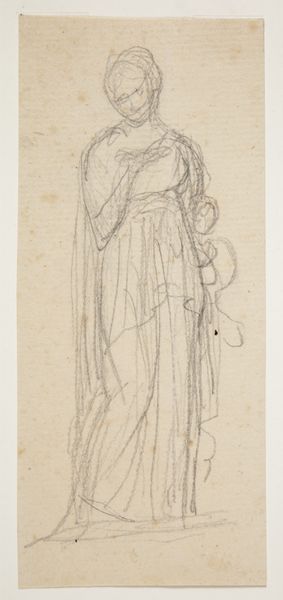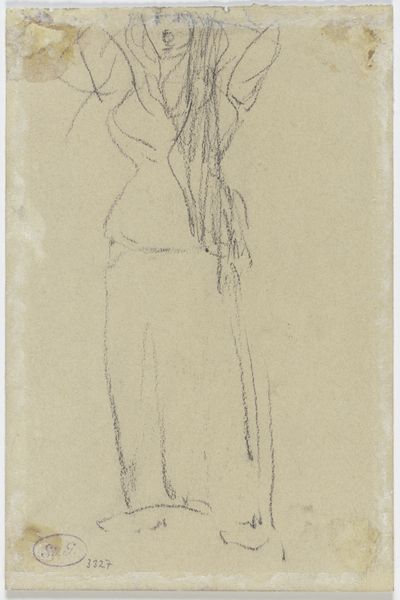
Jüngling in Rückenansicht, den Mantel über der Schulter gelegt
0:00
0:00
drawing, paper, ink, indian-ink, chalk, graphite
#
portrait
#
drawing
#
baroque
#
figuration
#
paper
#
ink
#
indian-ink
#
chalk
#
graphite
Copyright: Public Domain
Editor: This ink and chalk drawing, titled "Jüngling in Rückenansicht, den Mantel über der Schulter gelegt" is attributed to Stefano della Bella and is currently held at the Städel Museum. What strikes me most is how confidently the figure seems to gesture, even with their back turned. How do you interpret this work? Curator: The gesture, rendered in such fluid ink lines, definitely invites analysis. During the Baroque period, what messages did artists, and more importantly, their patrons, try to convey through representations of the human form? Think about the cultural emphasis on rhetoric and persuasion. Gestures became a language, understood across social classes, even influencing theatre and public speaking. How might this drawing reflect or subvert those expectations? Editor: I see what you mean! It’s almost theatrical. So, this isn't just a study of the figure, it’s communicating something about... performance? Curator: Precisely. The drawing likely served as a preparatory sketch. But also consider who typically viewed drawings like this at the time. Drawings and prints like these became important in the rise of connoisseurship and collecting in the 17th century. Owning and displaying such works served as signifiers of social and intellectual status. It really makes one think about how an artwork like this would signify status to collectors during that era. Editor: That’s a perspective I hadn't fully considered – how the drawing itself became an object of status. I now appreciate the layers of meaning embedded in what I initially saw as a simple figure study. Curator: The role art plays within society definitely has a lasting impact!
Comments
No comments
Be the first to comment and join the conversation on the ultimate creative platform.
